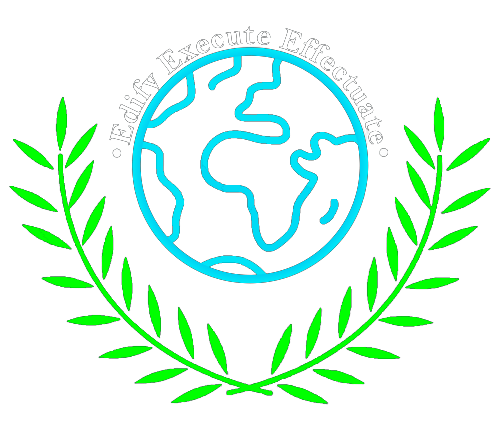Introduction The Israel-Palestine conflict is one of the most complex and long-standing disputes in modern history, marked by deep-rooted political, religious, and territorial disagreements. Centred around the land between the Mediterranean Sea and the Jordan River, the conflict encompasses competing nationalistic aspirations: Jewish claims for a homeland in Israel and Palestinian demands for sovereignty in what they consider their ancestral territory. Over decades, it has led to wars, uprisings, and failed peace negotiations, leaving a legacy of displacement, mistrust, and suffering. To understand the intricacies of this conflict, it is essential to delve into its historical roots, tracing back to when the region underwent transformative political, social, and demographic changes. Historical Background The story begins with the ancient Kingdom of Israel, where Jews lived under King Solomon’s rule around the 10th century BCE. Solomon built the First Temple in Jerusalem, known today as the Temple Mount, a sacred site for Jews. In 586 BCE, the Babylonians, led by King Nebuchadnezzar, destroyed the First Temple and exiled many Jews to Babylon. Later, the Persian Empire, under Cyrus the Great, allowed the Jews to return and rebuild the temple, which was completed in 516 BCE and called the Second Temple. However, the Romans destroyed this temple in 70 CE, forcing Jews into the Diaspora, scattering them across Europe and the Middle East. During this period, Jesus of Nazareth was born in Roman-occupied Judea. His teachings diverged from Jewish traditions, forming the foundation of Christianity. Following his crucifixion by Roman authorities, tensions grew between Christians and Jews, as some Christians blamed Jews for Jesus’ death. By the 4th century, Emperor Constantine embraced Christianity and built the Church of the Holy Sepulcher near the Temple Mount. In the 7th century, Arab armies under Caliph Umar conquered Jerusalem, building the Al-Aqsa Mosque and Dome of the Rock. These overlapping histories make Jerusalem sacred for Judaism, Christianity, and Islam, setting the stage for modern conflict. The First World War and the Balfour Declaration During World War I (1914-1918), Britain sought to secure the support of various groups, including Jews and Christians, as part of its broader strategy to counter the Ottoman Empire, which controlled Palestine and supported Germany. In 1917, Britain issued the Balfour Declaration, a statement expressing support for the establishment of a “national home for the Jewish people” in Palestine. This declaration was pivotal, as it recognized Jewish aspirations for a homeland while also asserting that the rights of existing non-Jewish communities in Palestine would not be prejudiced. Following the war, the Ottoman Empire was dismantled, and the League of Nations granted Britain a mandate over Palestine in 1920. This marked the beginning of increased Jewish immigration to Palestine, with approximately 300,000 Jews migrating to the region between 1919 and 1936. Many were fleeing rising anti-Semitism in Europe, particularly with the ascent of Adolf Hitler in Germany. However, this migration and Britain’s policies caused significant discontent among the Arab population, who viewed it as a threat to their demographic and political dominance in the region. (Balfour Declaration) World War II and the Holocaust The Holocaust during World War II (1939-1945) had a profound impact on the Jewish community worldwide. An estimated six million Jews were systematically murdered by the Nazi regime in concentration camps and through other means. The genocide underscored the urgent need for a safe haven for Jews and galvanized international support for the establishment of a Jewish state. At the end of World War II in 1945, the victorious Allies, including Britain, the United States, and the Soviet Union, were instrumental in the creation of the United Nations (UN). The Holocaust’s atrocities strengthened the argument for a Jewish homeland, leading to increased global advocacy for a resolution to the situation in Palestine. The UN Partition Plan of 1947 In 1947, Britain, unable to resolve the escalating tensions between Jews and Arabs in Palestine, referred the matter to the United Nations. The UN proposed a partition plan to create two independent states—one Jewish and one Arab—while placing Jerusalem under international administration. The plan was endorsed by major powers, including the United States and the Soviet Union, and was adopted by the UN General Assembly. The establishment of Israel was declared on May 14, 1948. However, this decision was immediately rejected by Arab nations, leading to the First Arab-Israeli War in 1948. Israel, despite being newly established and facing considerable odds, emerged victorious and gained additional territory beyond the original UN partition plan. The war resulted in significant displacement, with hundreds of thousands of Palestinians becoming refugees—an issue that remains a core grievance in the Israel-Palestine conflict. (UN Partition Plan 1947) The Suez Crisis and the Six-Day War Tensions between Israel and its Arab neighbours continued to escalate in the following decades. Egypt, under President Gamal Abdel Nasser, sought to challenge Israel’s trade and military security. In 1956, Egypt nationalized the Suez Canal and blocked Israeli shipping. This led to the Suez Crisis, where Israel, supported by Britain and France, launched a military intervention. Although Israel withdrew under international pressure, the conflict highlighted the strategic vulnerability of the region. The Six-Day War of 1967 further reshaped the geopolitical landscape. Triggered by Egypt’s closure of the Straits of Tiran to Israeli shipping and the mobilization of Arab forces, the war saw Israel launch a pre-emptive strike against Egypt, Jordan, and Syria. In just six days, Israel achieved a decisive victory, capturing the Sinai Peninsula, Gaza Strip, West Bank, East Jerusalem, and Golan Heights. These territorial gains significantly altered the dynamics of the conflict, as Israel now controlled areas with large Palestinian populations, further intensifying tensions. The Right to Exist The Jewish connection to the land of Israel spans over 3,000 years, with Jerusalem at the core of their historical and spiritual identity. The establishment of Israel was seen as a necessary refuge for Jews worldwide, especially after the Holocaust. The United Nations’ approval of the partition plan gave legal recognition to this homeland (United Nations, 1947). However, Israel’s formation was met with immediate











